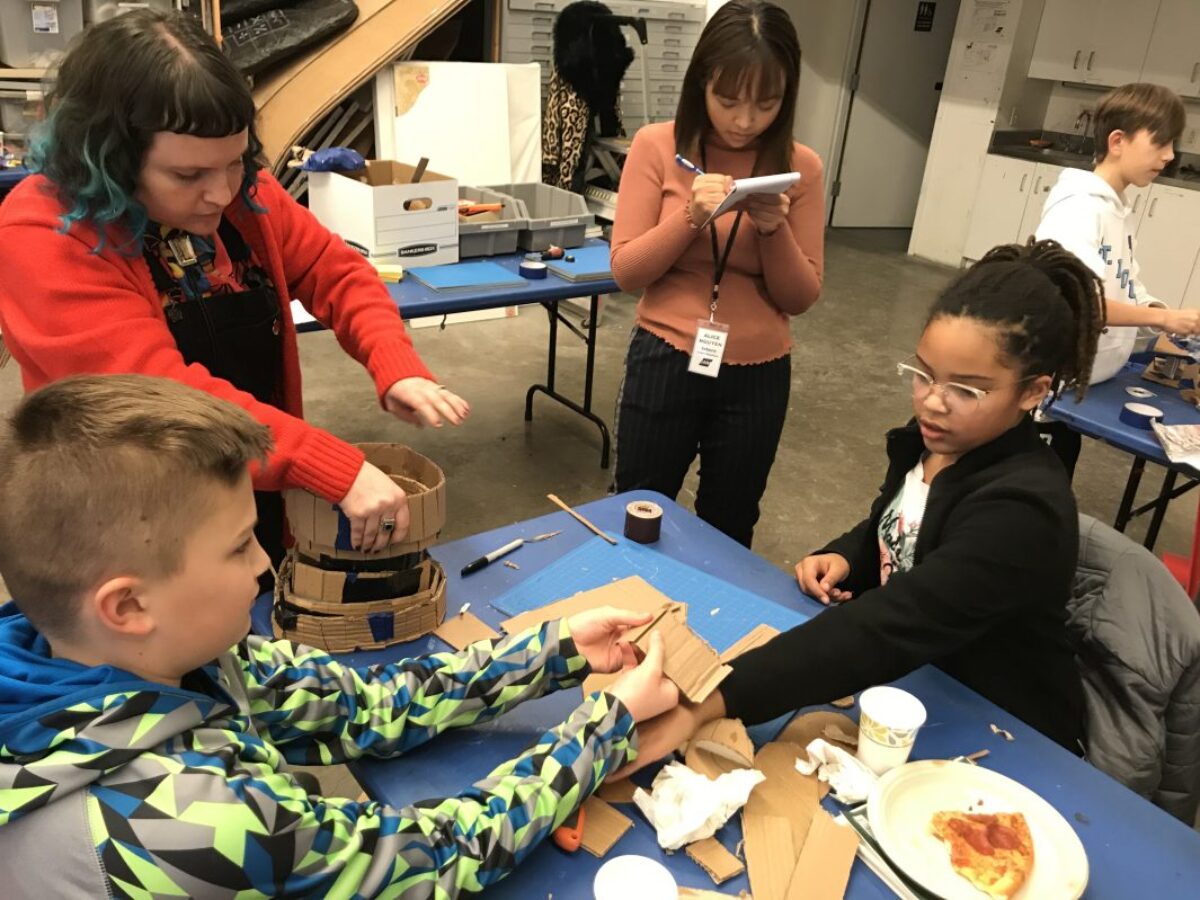Cutting tools, rulers, pieces of cardboard, hot glue guns, duct tape—the CAM Education Studio is filled with art supplies of all sorts, laid out in different stations for each stage of the art-making process. Students crowd around long tables, enjoying their pizza and chattering excitedly in anticipation of another LEAP workshop.
The LEAP Middle School Initiative is a ten-week program designed for young artists who wish to explore contemporary art practices and mediums. Students receive instruction from a professional St. Louis-based artist, as well as free art supplies and dinner with every session. “Each season we invite a different teaching artist, usually someone who works with multimedia and practices a contemporary, distinctive art style,” explains José Garza, the director of the program. This spring season, Janie Stamm is the LEAP teaching artist.
Stamm is a craft-based artist living in St. Louis whose work brings focus to the preservation of Florida’s local environment and Queer history. For this season, Stamm guides LEAP students’ exploration of storytelling through Project Lost Island: students create 3-D imaginary islands using cardboard and papier-mâché, each accompanied by an illustrated zine that explains its unique ecosystem.
The evening I visit the workshop, LEAP students are constructing the cardboard bases of their islands based on their sketches from the previous week. On one table, a rounded base stands next to a mountainous structure, followed by a triple-layered construction and a cone-like tower. Many opt to experiment with the cardboard surface by etching creative patterns or repeatedly scraping vertical lines to resemble tree bark. “All of them have an art background, so they already think in an art-making way,” says Stamm about the students’ artistic process. “From the drawings in their sketchbook to the object itself, the renderings are just so thoughtful and beautiful.”
Each island embodies a specific concept or philosophy. One student plans to construct a cascading waterfall and an illuminated archway. Another wants blooming cacti to adorn her crystal structure. While many look at real landscapes for inspiration, others abandon naturalism altogether. Alexa, for instance, dreams of an island in the shape of a giant hamburger. When inquired about her vision, she answers matter-of-factly: “I love food. Yup. I do.” Emma, a three-year participant in the program, envisions an island ruled by cats: “Cats rule the world. They already do. They’ve been doing it and no one has a clue.”
Like Emma, many students have been involved with LEAP for more than two years. Samiah, who has attended four semesters of LEAP, explains how the program has helped her improve her practice: “I’ve learned to expand my creativity. I used to draw a lot, but now I make more objects and sculptures. I’ve really been doing things outside of the box.” When asked about their favorite part of the program, others also express their enthusiasm for 3-D projects that bring art off the canvas. “We believe in hands-on art,” says director Garza, “art as a continuous experiment and a lifelong learning process.”
“We have 20 minutes until cleaning up!” announces Stamm as the session comes to an end. “Aww noooo,” protest the students, who seem ready to dedicate another hour to their art. “They’ll start painting the structures next week,” says Stamm, “and that is gonna be wild.”
—Alice Nguyen
